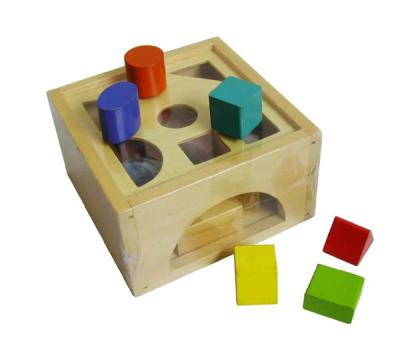In Montessori, we pay particular attention to the skill of classification. At its simplest, classifying means organizing objects by their similar or dissimilar characteristics. The process of classifying helps children obtain information about the world around them, as well as developing their thinking and reasoning abilities.
Being able to manipulate objects is essential to internalizing the concepts of classification. That’s just one reason that Montessori materials are so perfect for strengthening skills like abstract and logical reasoning.
It Starts Early
Classifying can start as early as toddlerhood, when a child might put all the blue blocks, red blocks, and yellow blocks in their respective piles. They might not even know the word for each color yet, but they can observe the differences between them.
“One of these things is not like the other”, goes the famous Sesame Street song, and children are extremely adept at picking out things that just don’t fit. Think about what they have to do to figure out these kinds of puzzles: first, they must decide what universal attribute the majority of the items share, and then they must decide which item doesn’t fit the pattern. It’s a two-step process.
Classification becomes more sophisticated when children begin to notice that items can share some attributes but differ in others. For instance, buttons could be sorted by color or shape. Regrouping a collection of objects can strengthen a child’s ability to closely observe and organize according to specific characteristics.
Younger children are usually focused on very obvious characteristics, like color, size, and shape. Examples of these activities include button or bead sorting; small, medium, and large; and shape sorters where only the correct shape will fit through each hole. More advanced classification work includes living/non-living, land/air/water, and fruit/vegetable.
An older child will begin to look at objects with more discrimination: they may notice that while oranges, lemons, and limes are different in color, they are all citrus fruits. Or they may realize that insects, while varying widely in appearance, all have three body parts and six legs.
The Science of Classification
A few weeks ago, my family and I went to the Chicago Botanic Gardens. Right in the middle of the gardens is a huge statue of Carl Linnaeus, known as the father of modern botanical classification. My husband took this lovely picture of the statue; Carl is holding out his hand, signifying the eternal quest for knowledge:

Carl Linnaeus was a Swedish botanist, physician, and zoologist born in 1707. He devised the first cohesive system for classifying specific species. Before his time, plants and animals were often classified by things like geography (forest plants, ocean animals). He looked deeper, at the shared characteristics of species.
His system classified nature within a hierarchy, starting with kingdoms and moving on down through phylum, class, order, family, genus, and species. At each level, the classification becomes more and more specific. Take a step backward, though, and you’ll see that at its most basic level, it’s still the process of looking for universal similarities.
That means that this:

Is actually just a more highly sophisticated version of this:

As you work with young children on simple classification activities, you are laying the groundwork for them to understand the complicated way we organize the entire living world!
Here’s a recap of classification in Montessori:
Toddler:
Sorting by color, shape, and size; matching identical items
Primary 3‐6:
Practical Life — Sorting beads, buttons, nuts, shells, rocks, small objects
Sensorial — Cylinder Blocks and Knobless Cylinders, Color Boxes, Tasting & Smelling Bottles, Rough/Smooth
Language — Sorting cards (rooms and furniture, clothes and seasons), Initial Sound Cards, Color Sorting Cards
Cultural — land/air/water, living/non‐living, fruit/vegetable, seasons matching, food chain (herbivore,
carnivore, omnivore), sinking/floating
Elementary 6‐12:
Language — alphabetizing, syllabication, person/place/thing, short vowel/long vowel, common/proper, singular/plural, parts of speech work
Botany & Biology — Botany Kingdom Chart, Five Kingdom Chart, Types of Leaves and Flowers
Zoology — Animal Kingdom Chart, Types of Vertebrates, Types of Invertebrates, Vertebrates/Invertebrates
Geography — countries by continent, states by region; types of clouds and weather
History and Cultural — Fundamental Needs Chart, Fundamental Needs Cards (clothing, houses, etc.) by time period, past/present/future

